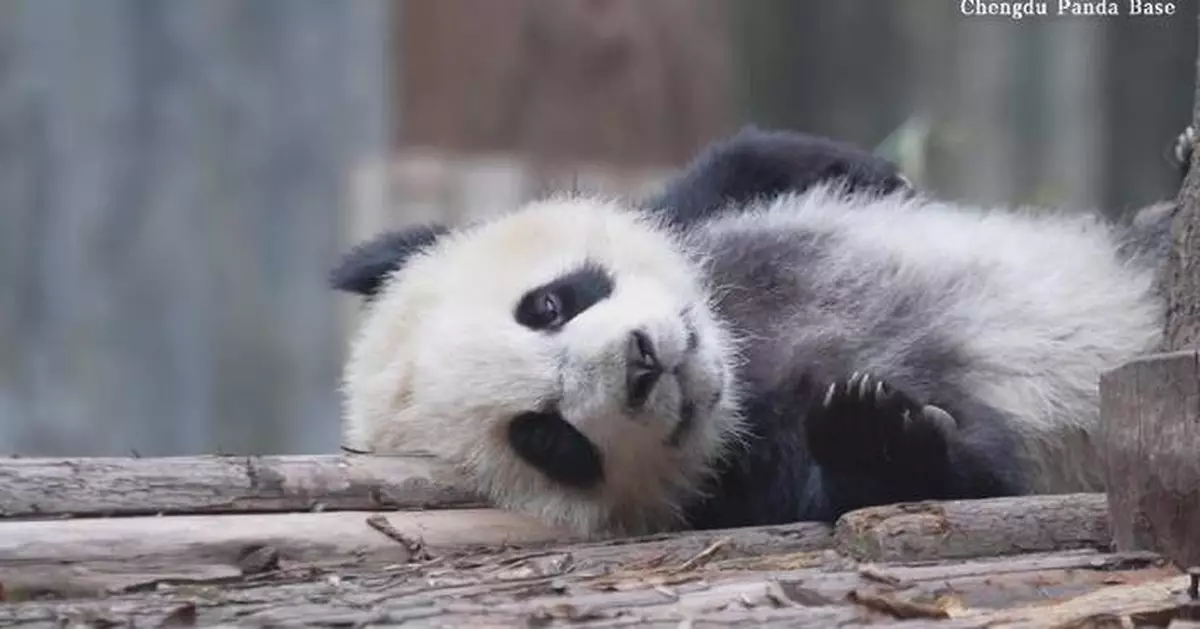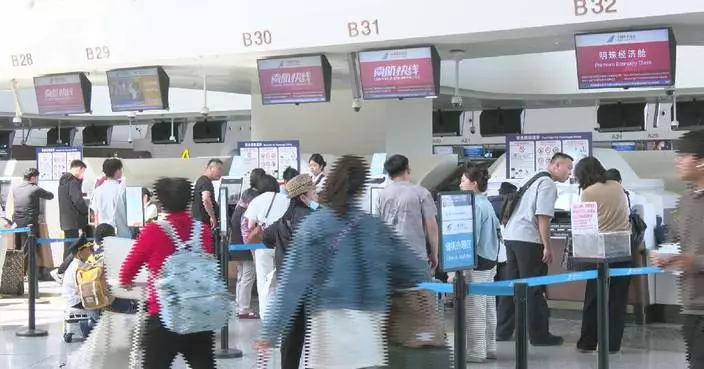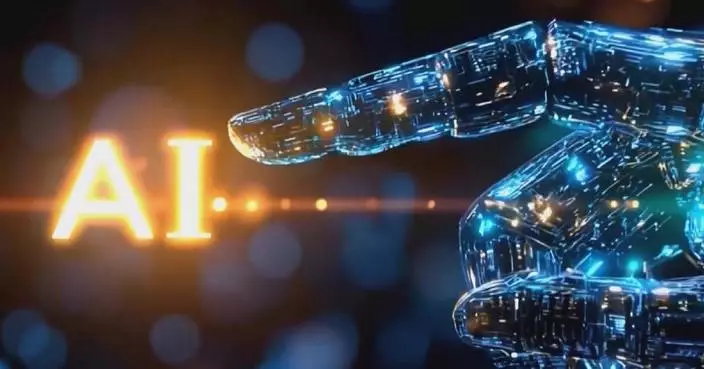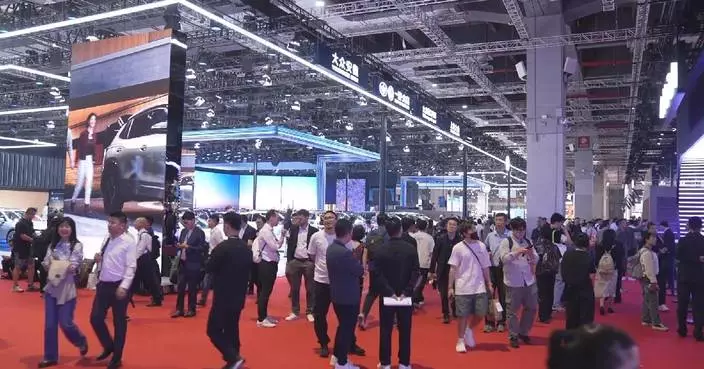A heartwarming video captured a giant panda cub stretched itself before settling down to sleep on a wooden structure in the Chengdu Research Base of Giant Panda Breeding. The footage showed the panda cub, which was born last year, lying on the behavioural enrichment device with a drowsy expression. Still curious about its surroundings, the cub stretched and glanced around, as if checking for anything interesting, before sleepiness finally took over. The wooden enrichment structure is part of the base's efforts to create a stimulating environment that meets the pandas' physical and psychological needs. Such enrichment measures help encourage the giant pandas to exhibit natural behaviors and ultimately promote their overall well-being.
Located in southwest China's Sichuan Province, the Chengdu Research Base of Giant Panda Breeding is a world-renowned institution for the conservation of giant pandas. The base is famous for its efforts in protecting and breeding giant pandas, red pandas, and other endangered wildlife exclusive to China, as well as for its educational outreach programs. It is now a major tourist attraction.
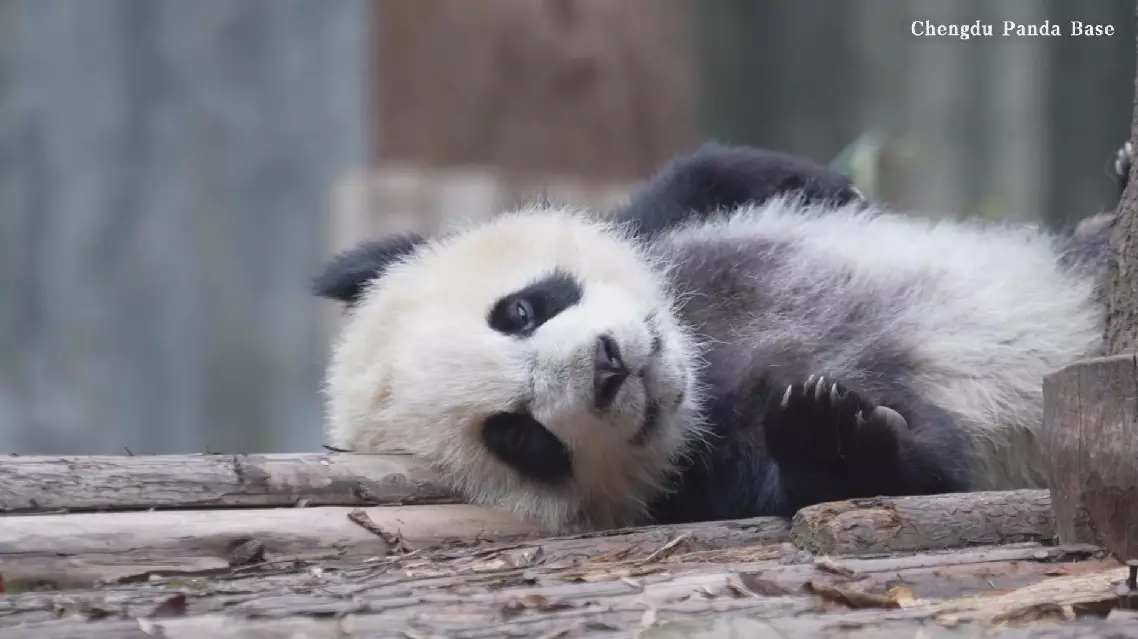
Cute panda cub stretches itself before falling asleep
Life science experiments conducted onboard China's Tiangong space station will not only help experts to better protect the health of astronauts, but also provide vital new ideas for human disease treatment back on Earth, a Chinese researcher said in Beijing on Wednesday.
Pei Weiwei, an associate researcher at the State Key Laboratory of Radiation Medicine and Protection of Soochow University, was speaking after a special handover ceremony was held where scientists received the samples brought back by the Shenzhou-19 space mission, which landed earlier that day.
The mission's three crew members touched down safely at the Dongfeng landing site in north China's Inner Mongolia Autonomous Region around Wednesday lunchtime, after their return had been postponed by a day due to unfavorable weather conditions on the ground.
During their six-month stay in space, Shenzhou-19 mission commander Cai Xuzhe, alongside young astronauts Song Lingdong and Wang Haoze, who is also China's first female space engineer, carried out an extensive series of scientific experiments and medical tests to assess the impact of space travel on human health and on other living organisms.
The returned samples include bone cells, human induced pluripotent stem cells and human bronchial epithelial cells. Scientists will conduct molecular biology research on these key samples, assessing the effects of the zero-gravity environment on human tissues and the impact of space radiation, according to Pei.
"The carcinogenicity of space radiation has always been a focus of our research, and the epithelial cells of the lungs are the most susceptible to tumors. So we are studying the evolution of lung epithelial cells into tumor cells in space radiation and some of its mechanisms. Based on this data, we aim to establish a space radiation risk assessment system suitable for Chinese astronauts. At the same time, we hope to provide some theoretical support for radiation monitoring and a complete radiation protection system," he said.
Pei said that such experiments and related research will not only help protect the health of astronauts, but can also offer new ideas to human health problems back on Earth, such as the diagnosis and treatment of lung cancer. It will also provide a new theoretical basis and experimental support for exploring health problems such as osteoporosis, muscle atrophy and decreased cardiovascular function, he added.
Space life science mainly studies the responses and changes of life activities at all levels from biomolecules to organisms under conditions such as microgravity, space radiation, and sub-magnetism, as well as their combined conditions, and explores the deep mechanisms of life phenomena.
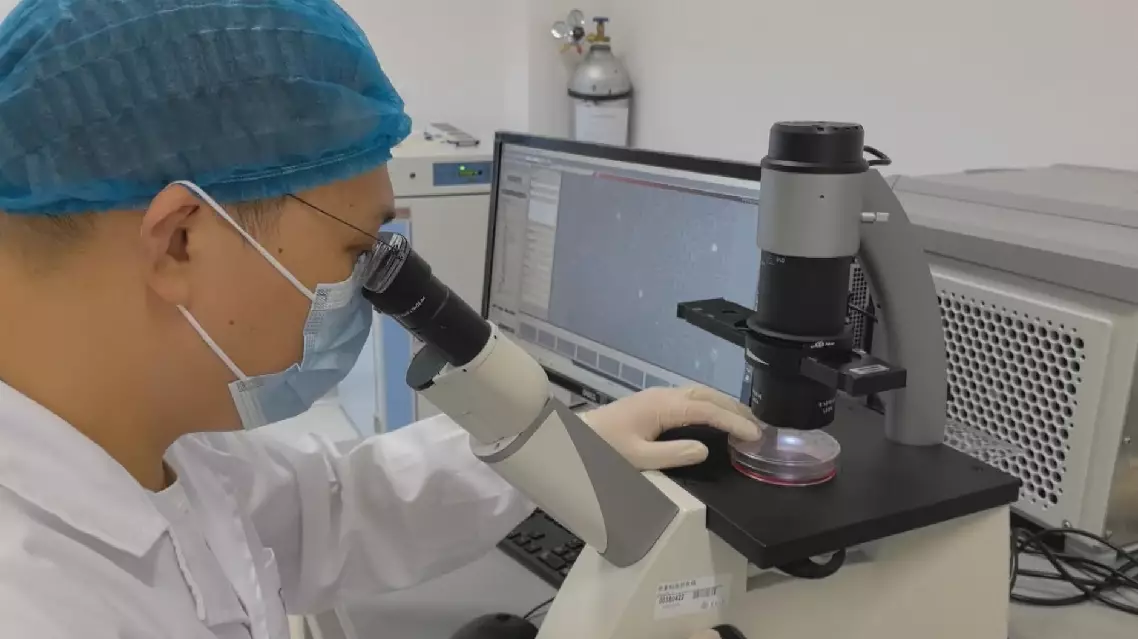
Space experiments can offer new approaches to tackling human health issues: expert



